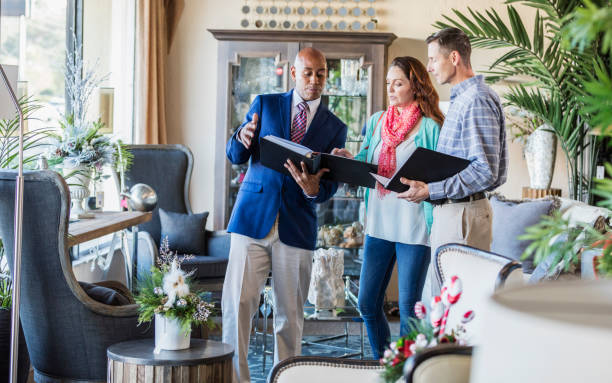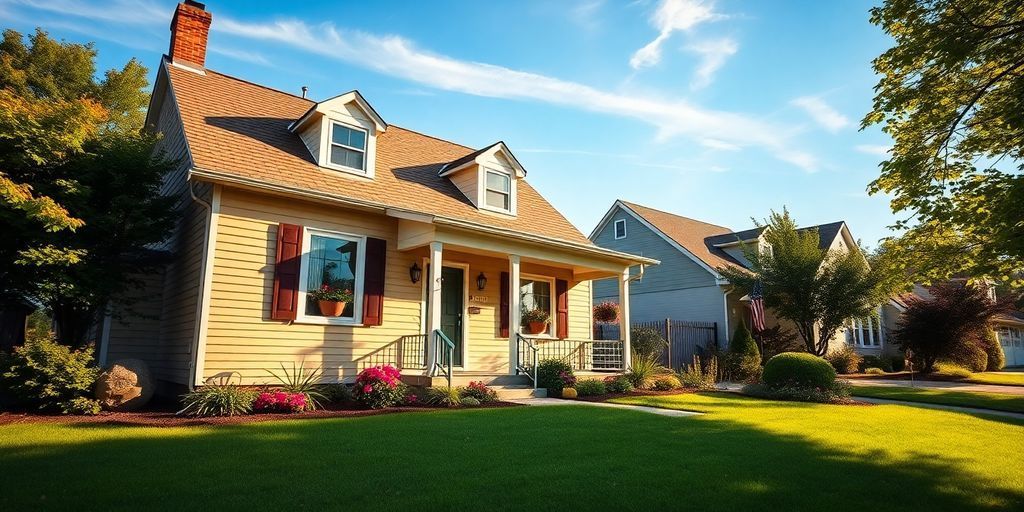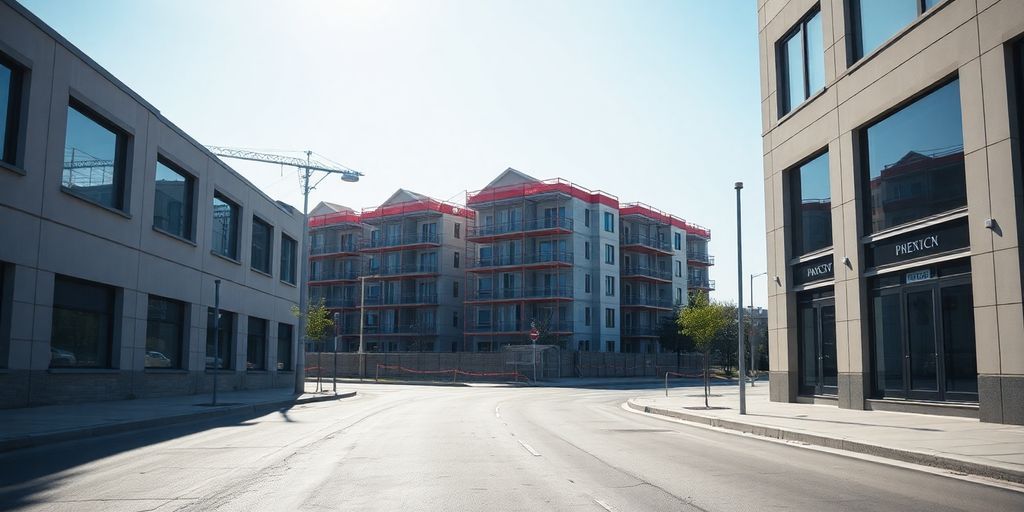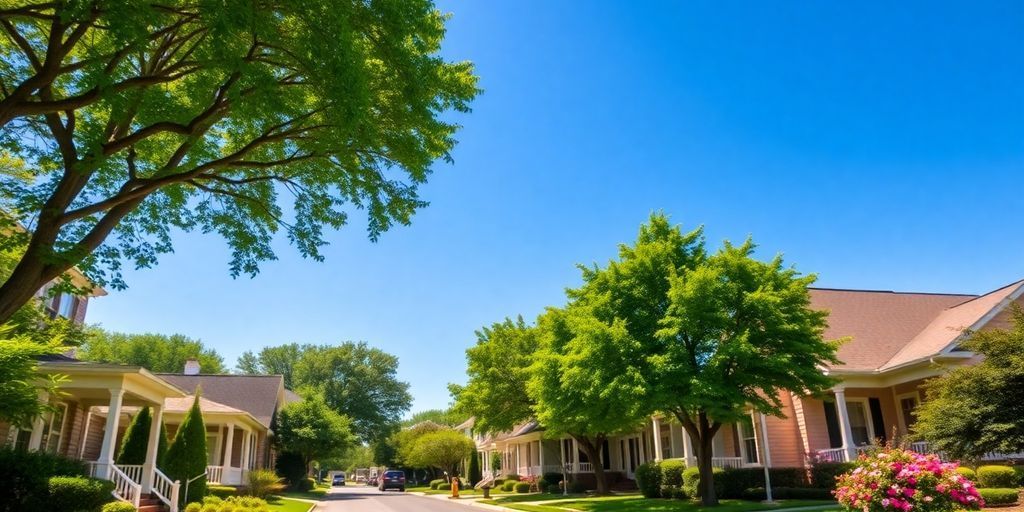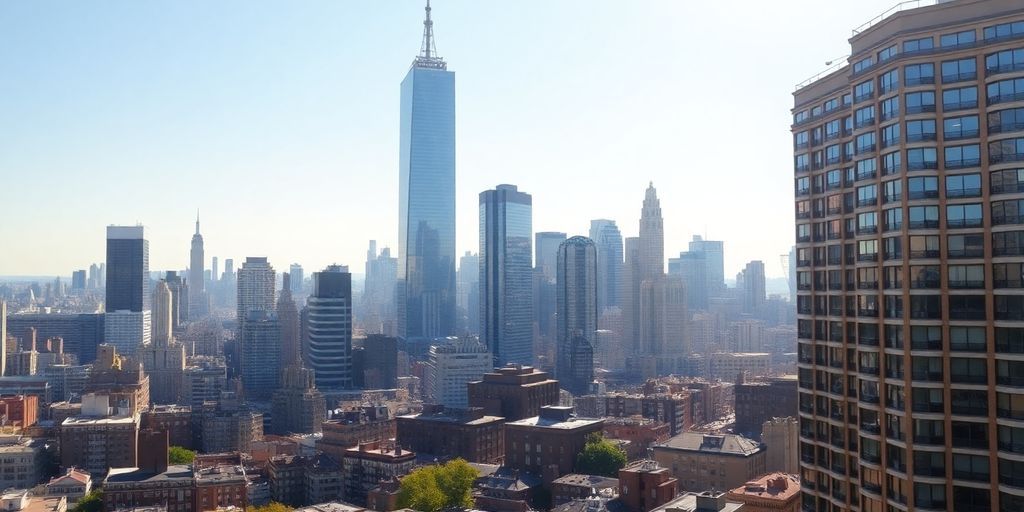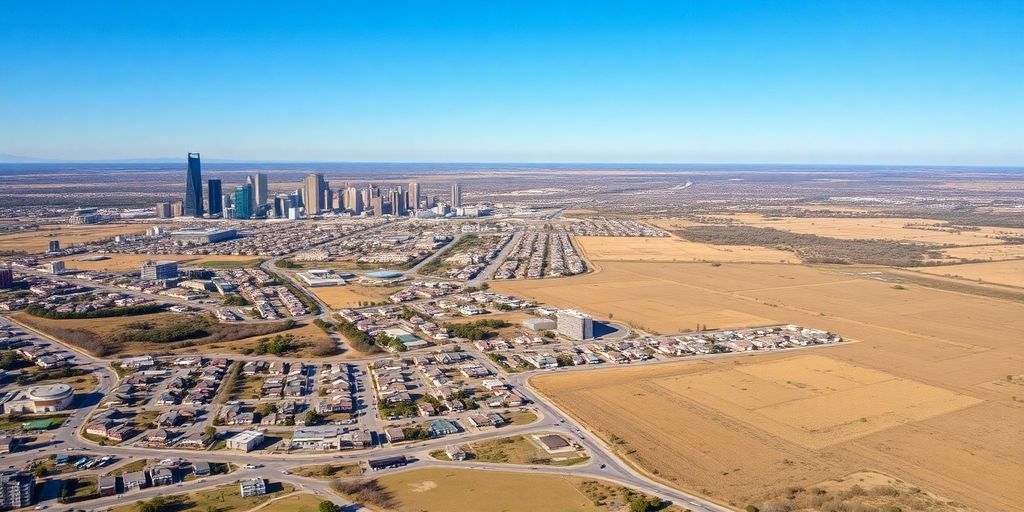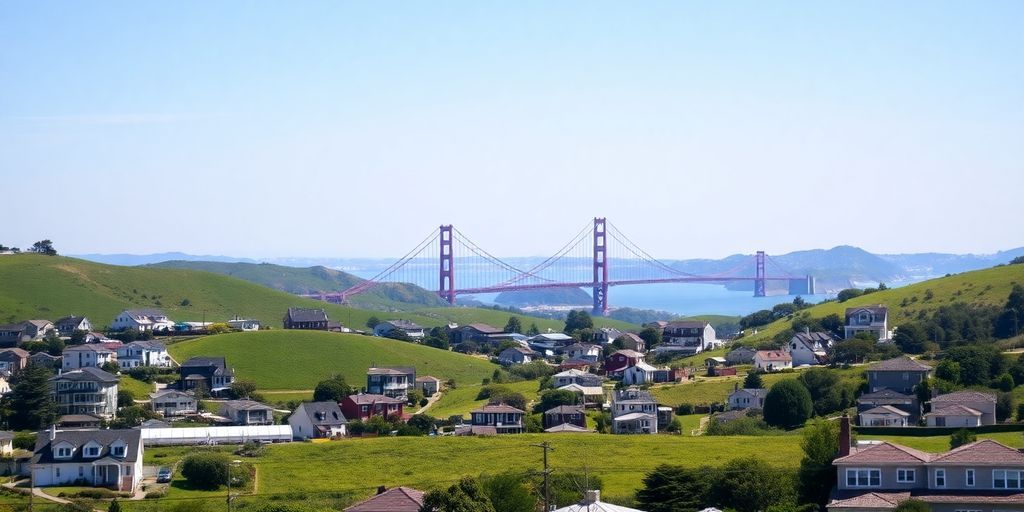The Growing Demand for Green Real Estate Trends
Blog Author - Published Date
The world of real estate is changing. More and more, people are looking for properties that are good for the planet. This shift, often called green real estate trends, is about more than just being eco-friendly; it's also about saving money and making buildings better for everyone. We'll look at how this is happening across different states and what it means for the future of buildings.
Key Takeaways
- Green real estate trends are becoming a big deal for investors and companies, with a growing focus on buildings that produce no carbon.
- New building ideas and real-world examples, like California's move away from gas in new homes and the Empire State Building using wind power, show how green building is taking off.
- Changing old buildings into green ones is a key part of this trend, with ideas like "living buildings" and making warehouses more eco-friendly.
- The market for green real estate trends is booming, with more green leases, higher property values for green buildings, and people wanting green homes.
- Building practices are changing to include things like making buildings strong against natural disasters and using smart, cost-effective ways to design green spaces.
It's pretty clear that green real estate is no longer a niche market. More and more people are realizing the benefits, and the demand is really picking up steam. It's not just about being eco-friendly anymore; it's about saving money, improving health, and future-proofing investments. I think the shift towards sustainable practices is becoming a mainstream expectation rather than just a trend.
Benefits of Sustainable Commercial Real Estate
Sustainable commercial real estate offers a bunch of advantages. For starters, there are long-term cost savings. Think lower energy bills, reduced water usage, and less waste. Plus, green buildings often attract higher rents and have increased property values. Companies are also finding that sustainable workspaces can boost employee productivity and well-being. It's a win-win for everyone involved.
Investor Focus on Greener Buildings
Investors are paying close attention to the green building movement. They see the writing on the wall: climate change is a real risk, and buildings need to be part of the solution. Fund managers are now evaluating which buildings can be retrofitted to meet new standards and which ones might become stranded assets. It's all about mitigating risk and maximizing long-term returns. The ESG certifications are becoming more important than ever.
Shifting Focus to Net-Zero Carbon Buildings
The idea of a "best-in-class building" is changing. It's not just about location and fancy views anymore. Now, the focus is shifting to net-zero carbon emissions, promoting health and well-being, and being resilient to climate change. Companies want to show they're serious about sustainability, and net-zero buildings are a great way to do that. It's about creating a comfortable and energy-efficient environment for everyone.
The push for net-zero isn't just a feel-good initiative; it's a strategic move. Buildings that achieve net-zero status are more attractive to tenants, investors, and employees. They also help reduce the impact on the environment, which is something we all need to be thinking about.
Innovative Green Building Trends and Case Studies
California's Push for Gas-Free New Buildings
California is really leading the charge when it comes to sustainable building. A big part of that is the move toward gas-free new buildings. It's not just about reducing emissions; it's about creating healthier indoor environments and future-proofing homes against rising energy costs. Some cities are already requiring all-electric new construction, and the trend is expected to spread. This shift involves rethinking everything from heating and cooling systems to cooking appliances, favoring electric heat pumps, induction cooktops, and other energy-efficient technologies. Builders are adapting by incorporating these technologies early in the design phase, and consumers are slowly getting on board as they realize the long-term benefits. This is a big step towards cutting-edge green building solutions.
Leading Green Cities in the U.S.
Some cities are really stepping up their game when it comes to green building. It's not just about individual projects; it's about city-wide initiatives and policies that promote sustainability across the board. Here are a few examples:
- San Francisco, California: Known for its aggressive climate goals and comprehensive green building programs.
- Seattle, Washington: A leader in energy efficiency and green infrastructure.
- New York City, New York: Implementing ambitious retrofitting programs and sustainable construction standards.
These cities are setting the standard for others to follow, demonstrating that sustainability can be integrated into every aspect of urban development. They're using a mix of incentives, regulations, and public-private partnerships to drive change, and the results are starting to show. It's pretty cool to see how these cities are transforming themselves into models of sustainability.
Empire State Building's Wind Power Transition
The Empire State Building is a great example of how existing buildings can be transformed into sustainable structures. One of the most interesting aspects of its green makeover is the exploration of wind power. While not fully implemented yet, the idea of harnessing wind energy at such a height is pretty innovative. The building's owners are looking into various wind turbine technologies and assessing their feasibility. This project highlights the challenges and opportunities of integrating renewable energy into iconic landmarks. It's a reminder that even the most established structures can adapt to meet modern sustainability standards.
Retrofitting a building like the Empire State Building isn't easy. It requires careful planning, innovative engineering, and a commitment to long-term sustainability. But the potential benefits are huge, not just for the building itself, but for inspiring other building owners to take similar steps.
Converting Existing Structures to Green Buildings
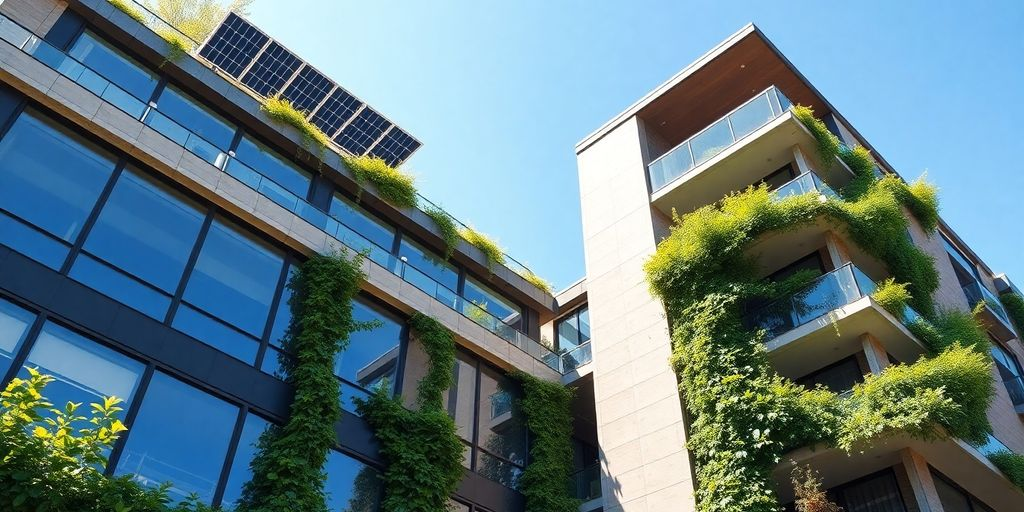
Retrofitting for Net-Zero Emissions
Retrofitting existing buildings is becoming a key strategy in achieving net-zero emissions. While the initial investment can be substantial, the long-term savings from reduced energy consumption often outweigh the costs. Retrofitting involves upgrading various building systems, such as HVAC, lighting, and insulation, to improve energy efficiency.
- Replacing old windows with energy-efficient models.
- Upgrading insulation to reduce heat loss.
- Installing smart thermostats for better temperature control.
Retrofitting not only reduces a building's carbon footprint but also enhances its market value and appeal to environmentally conscious tenants.
The Living Building Concept
The 'Living Building' concept takes sustainable building to the next level. These buildings are designed to be self-sufficient, generating their own energy and water, and treating their own waste. A 'Living Building' opens in Portland is a great example of this concept in action. They aim to have a net-positive impact on the environment, contributing more than they consume. This often involves:
- On-site renewable energy generation (solar, wind).
- Rainwater harvesting and greywater recycling.
- Use of non-toxic, locally sourced materials.
Greening Warehouse and Distribution Centers
Warehouses and distribution centers, with their large footprints, offer significant opportunities for greening. These buildings typically have large roof areas suitable for solar panel installations and can benefit from improved insulation and efficient lighting systems. Many of them take only a modest amount of energy to run, compared with more densely occupied structures such as office buildings or hotels.
| Feature | Green Upgrade | Benefit |
|---|---|---|
| Roofing | Cool roofing materials | Reduced heat absorption, lower AC costs |
| Lighting | LED lighting with sensors | Lower energy consumption |
| HVAC | High-efficiency systems | Reduced energy use and emissions |
| Water Usage | Rainwater harvesting systems | Reduced water consumption for landscaping |
Market Dynamics of Green Real Estate Trends

Record-Breaking Year for Green Leasing
Wow, green leasing is really taking off! It's not just a niche thing anymore. We're seeing record numbers in commercial buildings, which is a huge step. This means more companies are prioritizing sustainability when they're looking for office space. It's a win-win: businesses get efficient workspaces, and the environment benefits. I remember when environmental development initiatives were just a concept, now they're driving real change.
Increased Asset Values for Green Buildings
Green buildings aren't just good for the planet; they're also good for your wallet. Turns out, these properties often have higher asset values compared to traditional buildings. Investors are catching on, realizing that sustainability isn't just a trend—it's a smart investment. This shift is changing how we think about real estate value, focusing on long-term benefits and reduced operating costs. It's pretty cool to see the market rewarding eco-friendly choices.
Homebuyer Demand Driving Green Home Construction
Homebuyers are increasingly interested in green homes, and this buyer interest is pushing builders to adopt sustainable construction methods. People want energy-efficient features, healthier indoor air quality, and lower utility bills. This demand is creating a ripple effect, encouraging innovation and driving down the costs of green building materials. It's exciting to see how consumer preferences are shaping the future of residential construction.
It's interesting to see how much the market is changing. People are starting to realize that green buildings aren't just a nice-to-have; they're becoming a must-have. This shift is driven by a combination of factors, including environmental awareness, cost savings, and a desire for healthier living spaces. It's a trend that's here to stay, and it's going to continue to transform the real estate industry.
Key Strategies for Sustainable Building Practices
Resiliency Building Against Natural Hazards
Building resilience is now a key aspect of sustainable design, focusing on minimizing the impact of environmental hazards.Eco-friendly construction is no longer just about energy efficiency; it's about creating structures that can withstand extreme weather events and other disasters. Builders are increasingly incorporating measures to protect homes and commercial buildings from earthquakes, floods, fires, and extreme temperatures.
Consider these strategies:
- Installing wind-resistant garage doors, which, although costing slightly more upfront, can prevent significant structural damage during high winds.
- Using strapping and gable bracing to reinforce the structure.
- Taping joints to prevent water damage.
Resilient design not only protects the building and its occupants but also reduces the long-term costs associated with repairs and recovery after a disaster. It's a proactive approach that ensures sustainability in the face of increasing environmental challenges.
Cost-Effective Green Design Approaches
Making green building affordable is a big deal. It's not just for high-end projects anymore. Simple things like considering the building's shape and how it sits on the land can make a huge difference. Using "cool" roofs that bounce sunlight away is another smart move. These strategies can lead to high-performance buildings without costing a fortune. Sustainability goals are achievable with smart planning.
Optimizing Energy Use in Buildings
Optimizing energy use is a cornerstone of sustainable building. It involves a combination of design choices, material selection, and technology implementation to minimize energy consumption and reduce the building's carbon footprint.
Here are some common strategies:
- Using blower door testing to identify and seal air leaks.
- Adopting above-code energy programs.
- Installing ducts in conditioned spaces.
Also, many builders are now pre-wiring homes for solar panels, making it easier for homeowners to add them later. This forward-thinking approach helps to promote renewable energy sources and reduce reliance on fossil fuels.
Defining and Achieving Green Building Standards
Understanding Net Zero Energy Commercial Buildings
Net-zero energy buildings are the holy grail of sustainable design. The basic idea is that the total amount of energy used by the building on an annual basis is equal to the amount of renewable energy generated on-site. This requires a combination of energy efficiency and renewable energy generation. Think solar panels, geothermal systems, and super-insulated walls. It's not just about slapping some solar panels on a roof; it's a holistic approach to building design and operation. Achieving net-zero requires careful planning and execution, but the long-term benefits are substantial.
Natural Ventilation and Passive Systems
Forget cranking up the AC all the time. Natural ventilation and passive systems are all about using the environment to your advantage. Things like strategically placed windows, thermal mass, and shading devices can significantly reduce the need for mechanical heating and cooling. Passive design is a cost-effective way to improve indoor air quality and reduce energy consumption. It's about working with the climate, not against it. Plus, who doesn't love a building that breathes?
Metering and Reviewing Building Performance Data
Data is king when it comes to green building performance. Installing meters to track energy and water use is the first step. But it doesn't stop there. You need to regularly review that data to identify areas for improvement. Are the solar panels performing as expected? Is the HVAC system running efficiently? Data-driven insights can help you fine-tune building operations and achieve optimal performance. Plus, it's a great way to demonstrate the value of your green building investments. Don't forget to look into LEED certification to help with this process.
Implementing green building standards can be complex, but the rewards are worth it. From reduced operating costs to improved occupant health, sustainable buildings offer a multitude of benefits. Plus, with increasing awareness of climate change, green buildings are becoming more attractive to tenants and investors alike.
Here's a quick look at some potential state incentives for green building:
- Tax credits for renewable energy installations
- Grants for energy-efficient upgrades
- Expedited permitting for green building projects
- Density bonuses for LEED-certified developments
The Future of Green Real Estate Trends
It's interesting to think about where green building is headed. It's not just a trend anymore; it feels like it's becoming the standard. I think we'll see some pretty cool changes in the next few years.
Integrating Green Data Fields in Commercial Listings
Imagine searching for a commercial property and seeing all its green features right there in the listing. Things like energy efficiency ratings, water usage, and even the materials used in construction. This transparency will help buyers and renters make informed decisions and push the market towards more sustainable options. It's like having a nutrition label for buildings!
Water Conservation in Commercial Real Estate
Water is becoming a bigger deal, especially in certain parts of the country. Commercial buildings are starting to implement some pretty innovative water conservation strategies. Think rainwater harvesting, greywater recycling systems, and low-flow fixtures. These aren't just good for the environment; they can also save building owners a ton of money on their water bills.
The Role of Government Incentives
Government incentives can really make a difference in pushing green building forward. Tax breaks, grants, and other programs can help offset the initial costs of green construction and retrofitting.
Here's a quick look at some common incentives:
- Tax Credits: Reducing the tax burden for green projects.
- Grants: Direct financial assistance for sustainable upgrades.
- Density Bonuses: Allowing developers to build more in exchange for green features.
It's not just about doing what's right; it's also about making economic sense. Government support can help bridge the gap and make green building accessible to more people.
Conclusion
So, what's the big takeaway here? Green building isn't just some passing fad anymore. It's really becoming the new normal in real estate, and for good reason. We're talking about buildings that use way less energy, which means lower bills for everyone. Plus, they're just better for the planet, cutting down on pollution and all that. People are starting to ask for these kinds of places, whether it's for their homes or their businesses. And honestly, it just makes sense. Why wouldn't you want a building that saves you money and is good for the environment? It's a win-win, and it looks like this trend is here to stay.
Frequently Asked Questions
What are the main benefits of green buildings?
Green buildings use less energy and water, which saves money. They also make people healthier and happier because of better air quality and natural light. Plus, they can be worth more money and attract renters who care about the environment.
Which cities in the U.S. are best at green building?
Many cities are becoming leaders in green building, like Washington D.C., San Francisco, and Chicago. They are setting good examples for others to follow.
Can older buildings be turned into green buildings?
Yes! Old buildings can be updated to be green. This is called retrofitting. It can cost money at first, but it saves a lot in the long run by making the building more energy-efficient.
Do green buildings increase property value?
Green buildings often sell for more money. People are willing to pay extra for homes and offices that are good for the planet and save them money on utility bills.
What are some new ways people are building green?
Builders are using smart designs that save energy, like special roofs that reflect sunlight. They also build stronger buildings that can handle bad weather better, which protects people and property.
How do buildings become 'net-zero energy'?
Net-zero energy buildings make as much energy as they use, often through solar panels. They also use natural ventilation and smart systems to control heating and cooling, and they track their energy use to make sure they are performing well.

